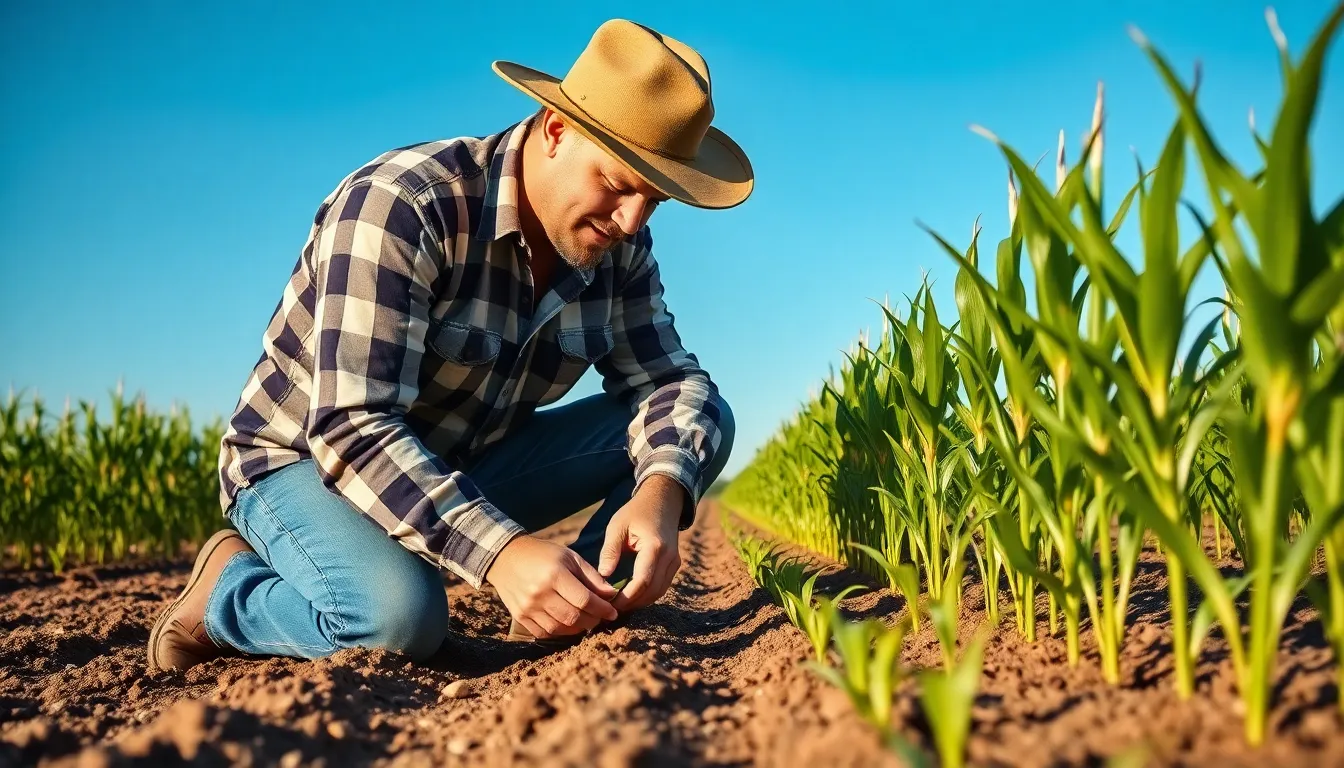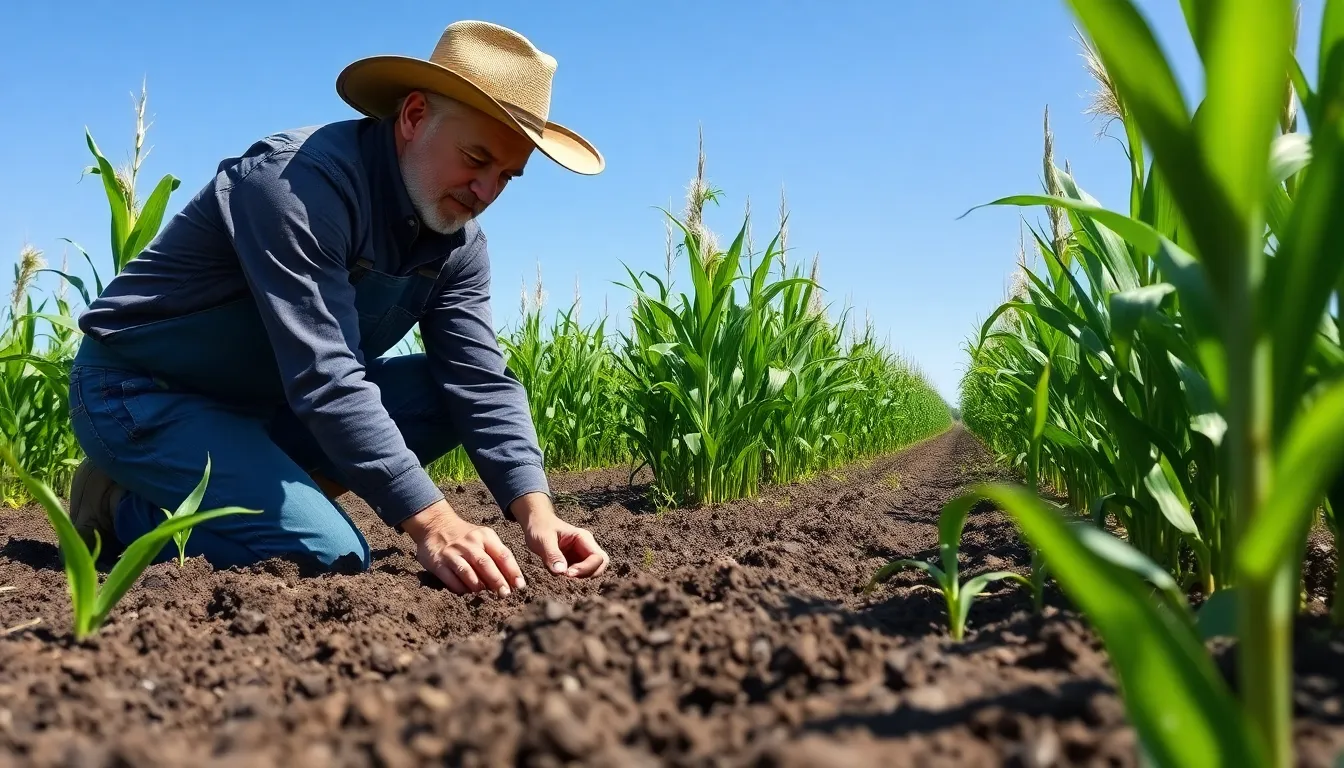Physical Address
304 North Cardinal St.
Dorchester Center, MA 02124

When it comes to corn planting, timing is everything. Imagine trying to grow sweet corn while it’s still snowing—talk about a recipe for disaster! Each state has its own unique climate quirks, making it essential for farmers and gardening enthusiasts to know the right dates to plant. After all, no one wants to be the laughingstock of the cornfield.
Timing plays a crucial role in corn planting success. Individual states experience varying climate conditions, making it essential for farmers and gardening enthusiasts to know specific planting dates. Early planting, particularly during snowy weather, can result in crop failures.
States in the Midwest, like Illinois, typically see optimal planting dates in late April through early May. Southern states, such as Alabama and Mississippi, benefit from an earlier window, often from mid-March to late April. Conversely, northern states like North Dakota and Minnesota generally follow a later schedule, starting in late May.
The USDA’s Plant Hardiness Zone map provides guidance on these variations by state. This map outlines the best practices for planting, considering factors like soil temperature and frost risk.
Monitoring local weather patterns helps in determining precise planting times. Each farmer should assess their unique conditions, as local microclimates can affect overall growth potential. It remains vital to consult local agricultural extensions or resources for tailored advice, as they can provide insights based on historical data and recent trends.
By understanding the specific corn planting dates for each state, growers can optimize their harvests and reduce the risk of crop failure. Cultivating knowledge about these dates fosters confidence, ultimately leading to successful corn production.

Regional climate characteristics dictate corn planting dates across the United States. Understanding these variations helps farmers and gardening enthusiasts secure optimal growth.
In northern states, corn planting typically begins later in the season. North Dakota and Minnesota often see planting dates from late May to early June. Cooler temperatures and frost risks delay sowing in these areas. Growers must monitor soil temperatures, as it influences germination rates. Consulting local agricultural extensions provides additional guidance tailored to specific microclimates.
Southern states, including Alabama and Mississippi, enjoy earlier planting opportunities. Growers can safely begin planting from mid-March to late April. Warmer temperatures facilitate quicker growth, making it crucial to choose the right dates. Varieties suited for early planting thrive, providing advantages in harvest timing. Regular updates on local weather patterns enhance successful crop establishment.
Central states like Illinois exhibit a balance between northern and southern planting timelines. Ideal planting dates usually fall between late April and early May. Variations in weather conditions can affect these averages, so staying informed is essential. Monitoring soil temperatures and frost risks aids in selecting appropriate planting dates. Engaging with local experts helps optimize planting schedules and maximize yield potential.
Corn planting dates depend on various factors. Understanding these elements aids in selecting the best times for planting.
Soil temperature significantly affects germination. Typically, corn germinates best when soil temperatures reach at least 50°F (10°C). Different states experience varying soil temperatures during spring, influencing planting schedules. In southern states, warm soil triggers earlier planting, while northern states often wait for temperatures to rise adequately. Monitoring soil conditions ensures optimal growth and germination rates for corn crops.
Weather significantly impacts corn planting dates. Temperature fluctuations, rainfall patterns, and frost threats vary by region. For instance, southern states experience milder springs, encouraging earlier planting. Conversely, northern regions face cooler temperatures and higher frost risks, postponing the planting window. Local forecasts guide farmers in making timely decisions. Staying informed about weather changes helps prevent crop failures and promotes successful harvests.
Ensuring successful corn planting requires attention to detail and adherence to best practices. First, select planting dates based on regional climate specifics. For example, optimal planting in Illinois usually occurs between late April and early May, while Alabama and Mississippi benefit from earlier planting from mid-March to late April.
Focus on soil temperature for effective germination. Corn germinates best at soil temperatures of at least 50°F (10°C). In southern states, warmer conditions allow planting sooner, whereas northern states should wait until temperatures are adequate to avoid frost damage.
Monitor local weather patterns closely. Weather fluctuations can significantly impact growth. Farmers must assess short-term forecasts and long-term projections to make informed decisions on planting schedules.
Consult local agricultural extensions for tailored guidance. These resources provide valuable insights into regional best practices and microclimate impacts. Experts can help farmers recognize specific challenges unique to their environments, enhancing the likelihood of a robust harvest.
Consider crop rotation benefits. Rotating corn with other crops can improve soil health and reduce pest populations, ultimately leading to better yields. Implementing this practice aids in maintaining soil nutrients.
Be aware of moisture levels in the soil. Adequate moisture is vital for healthy corn development. Irrigation may be necessary in drier areas to promote consistent growth and ensure plants receive the water they need.
Adhering to these practices cultivates a promising foundation for successful corn production across various states, even amidst changing environmental conditions.
Understanding the right corn planting dates for each state is essential for maximizing yields and ensuring successful growth. By considering regional climate variations soil temperatures and local weather patterns farmers can make informed decisions that enhance their crop’s potential.
Staying updated with the USDA’s Plant Hardiness Zone map and consulting local agricultural extensions provides valuable insights tailored to specific areas. With proper timing and attention to environmental factors growers can significantly reduce the risk of crop failure and enjoy bountiful harvests. Embracing these practices fosters confidence in corn production and contributes to sustainable agricultural success.